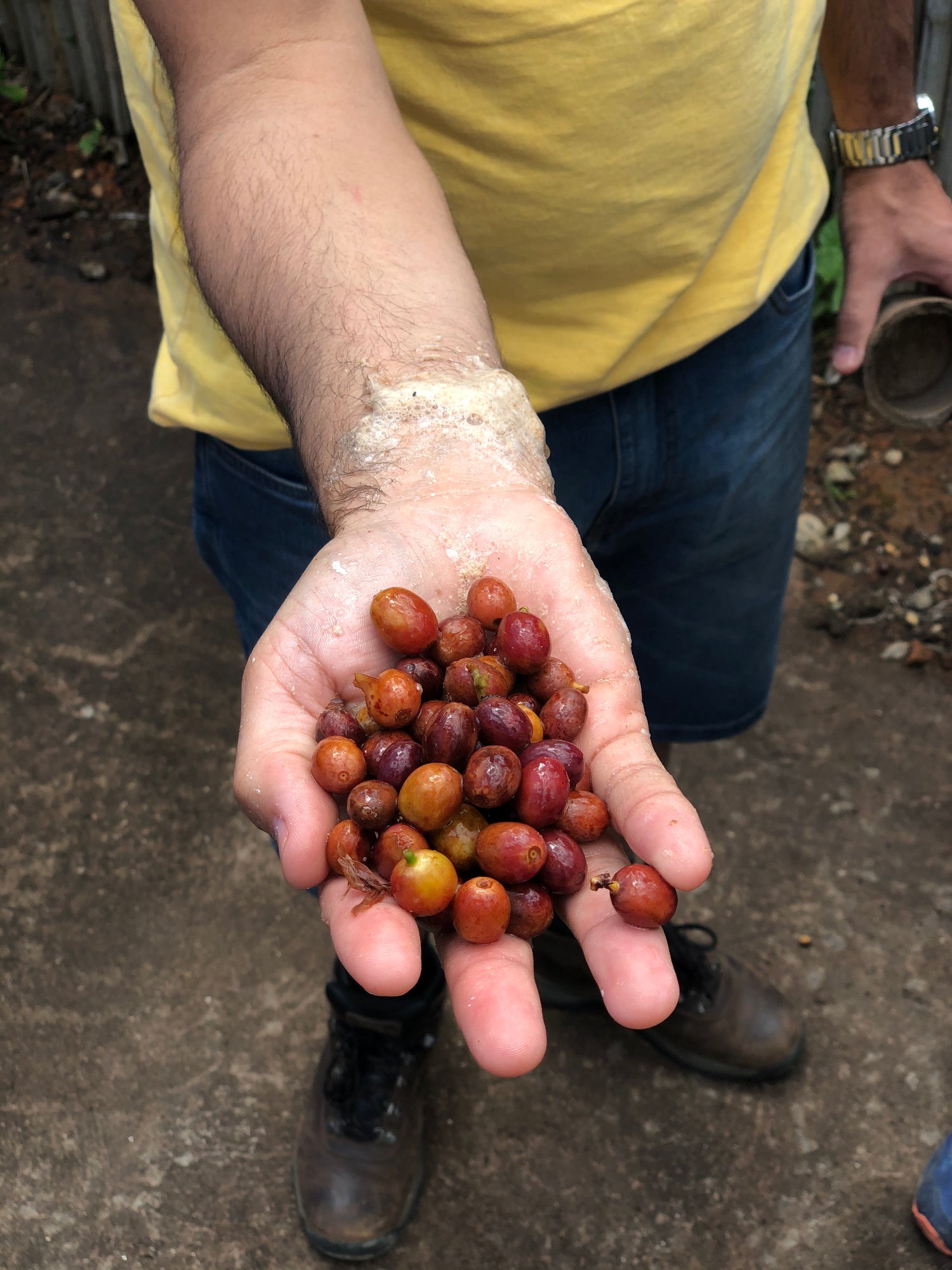Coffee prices have hit record highs in 2021 because of the perfect storm of challenges from climate to supply chain constraints. Partners' Green Coffee Buyer Sam Klein weighs in on the factors impacting coffee prices most and how we're approaching buying now and in the future.
Worldwide, coffee producing regions are experiencing new challenges associated with the pandemic and its economic disruption. While we’re working tirelessly to secure inventory and manage rising costs, we wanted to share about some of the issues currently impacting us and our supply chains.
The price of green (unroasted) coffee grown anywhere is heavily influenced by the production, or expected production, in countries like Brazil and Colombia, which specialize in producing large volumes of good coffee relatively inexpensively.
Leading up to its last harvest, Brazil experienced its worst drought in nearly a century, followed by two severe frosts affecting its key coffee growing regions. While both reduce yields, frost is particularly disturbing news because it can kill coffee plants in just two hours of exposure. Because newly planted coffee takes years to become productive, there are ongoing concerns that Brazil’s output could remain low for the next several years.
Simultaneously, Colombia suffered from excessive cloud cover and heavy rains, reducing the size of its harvest and complicating postharvest processing. Then, a series of nationwide protests shut down vital trucking routes between coffee growing regions and the major port cities, stalling the flow of coffee. Then, late in the year, it was revealed that coffee producers in Colombia had defaulted on contracts for 1 million bags of coffee, a tenth of its annual production.
Meanwhile, we’ve faced unprecedented issues affecting ocean freight. It’s taking an unusually long time for ships to offload their cargo, but there is a deeper issue in that empty containers aren’t being promptly reloaded onto ships. The result is a surplus of empty shipping containers in the United States and a shortage of containers in places that export coffee.
All of this has created a sort of perfect storm where the supply of coffee is low, freight times are long and unpredictable, and costs are elevated across every step of the supply chain.
The result has been a ten year high in coffee prices and a 90% increase over last year.
We often buy coffee for our mainstay blends at fixed prices with the goal of insulating ourselves and our producing partners from the market. We see this as a sustainable option when prices are low or volatile, but nonviable when the market is high and better prices are available to producers who sell elsewhere.
We’re optimistic that we’ll see meaningful price relief eventually, but we really can’t predict how soon. Container shipping will improve in time, and with recent widespread flowering there is reason to hope that Brazil’s upcoming coffee crop will surpass expectations. Until then, we’re excited to reaffirm our commitment to our farm relationships and to continue sourcing and roasting the same beautiful coffees we always have.






Leave a comment
This site is protected by hCaptcha and the hCaptcha Privacy Policy and Terms of Service apply.